20 Types of Butterflies in Minnesota (with Pictures)
-
Chris Dinesen Rogers
- Last updated:
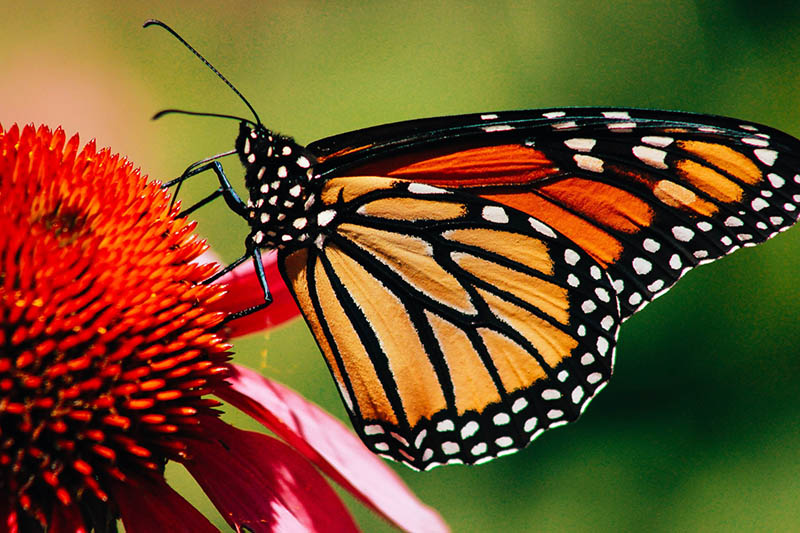
While we may scorn many types of insects, butterflies somehow manage to escape these negative connotations. Perhaps, it’s because we associate them with lazy summer days with them flying effortlessly over fields and in our garden. Unlike ants and wasps, we welcome butterflies to our yards with plants to attract them.
Despite its northern location, Minnesota provides a habitat for 146 butterfly species. While some are common, others are challenging to find because of where they live. Monitoring the populations of these insects offers valuable insights into the health of the various ecosystems in which they inhabit. That makes them an indicator species of environmental quality.
The 20 Types of Butterflies in Minnesota
1. Hackberry Emperor (Asterocampa celtis)
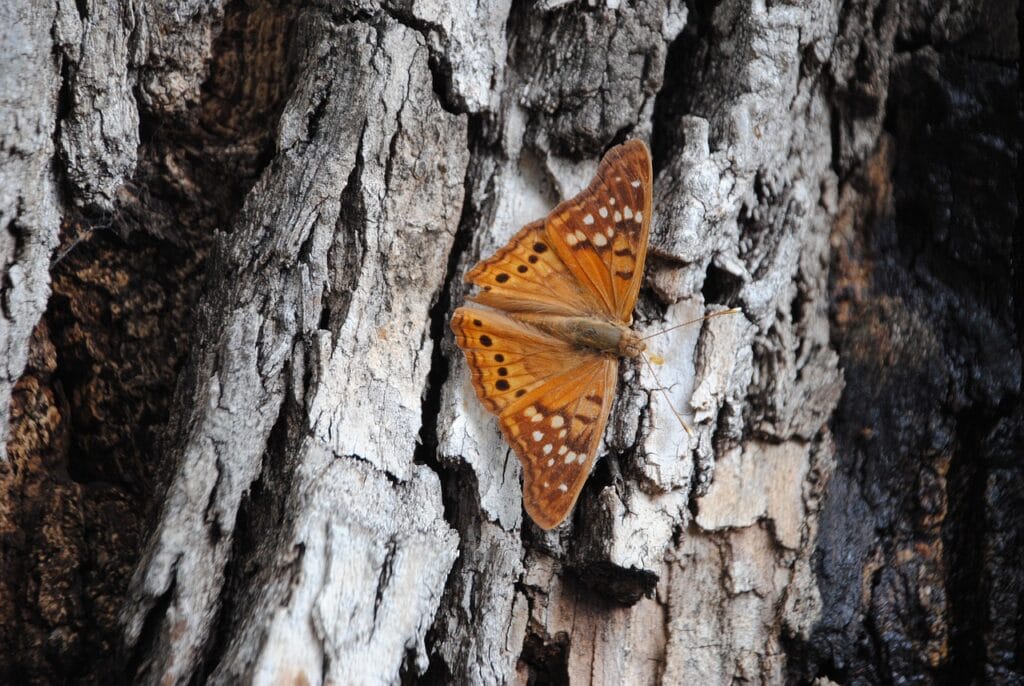
The Hackberry Emperor is a large butterfly with a wingspan up to 2.75 inches wide. It is a tan insect that blends in well on tree bark and other mute-colored vegetation. You’ll find this species in the southeastern corner of Minnesota in its preferred habitat of moist woods and wetlands. It gets its name from the tree on which you’re most likely to see it, the Hackberry.
2. Monarch (Danaus plexippus)
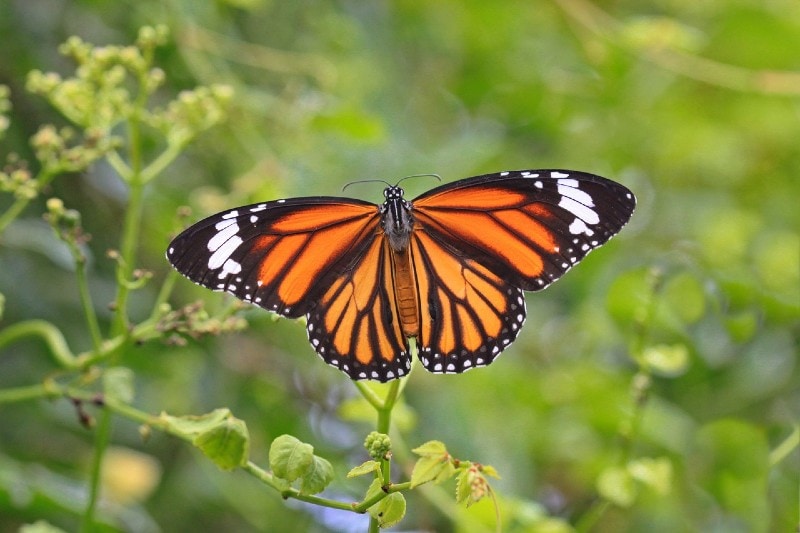
Minnesota is lucky to have many Monarch Butterflies in our neck of the woods despite the International Union for Conservation of Nature and Natural Resources (IUCN) declaration of it being an endangered species. The orange and black insect has a wingspan of up to 4.5 inches wide. Its preferred food is milkweed, which makes them bitter to would-be predators.
3. Persius Dusky Wing (Erynnis persius persius)

The Persius Dusky Wing is part of a group of butterflies known as skippers. You’ll usually see them in oak savannas where Wild Blue Lupine grows. It is an endangered species in Minnesota, with sightings confined to a single county in the southeastern corner of the state. Fortunately, it occupies land owned by the state’s Department of Natural Resources (DNR).
4. Variegated Fritillary (Euptoieta claudia)
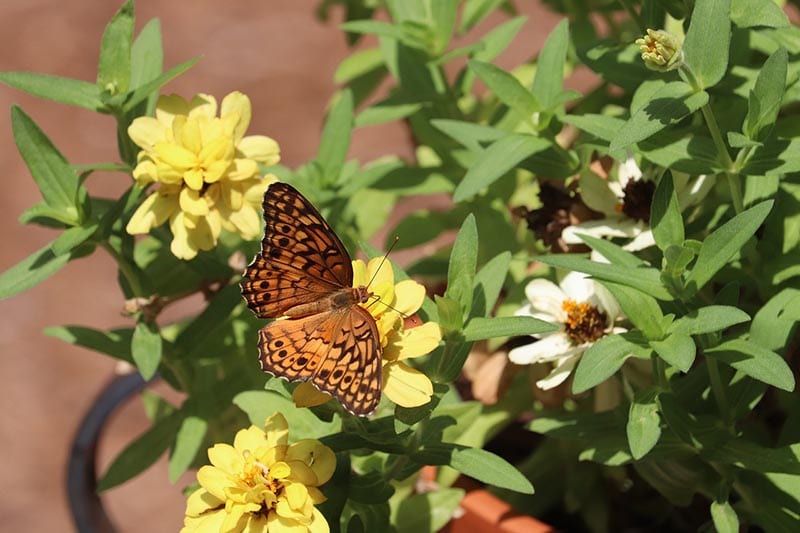
The Variegated Fritillary is a striking butterfly with orange and tan wings dotted with black lines and spots. It is found throughout the state, making prairies, grasslands, and open meadows its home. You can also attract them to your garden if you plant sunflowers, mint, or pansies in your yard. Its caterpillar is just as showy with its shiny white body and golden points.
5. Zebra Swallowtail (Eurytides marcellus)
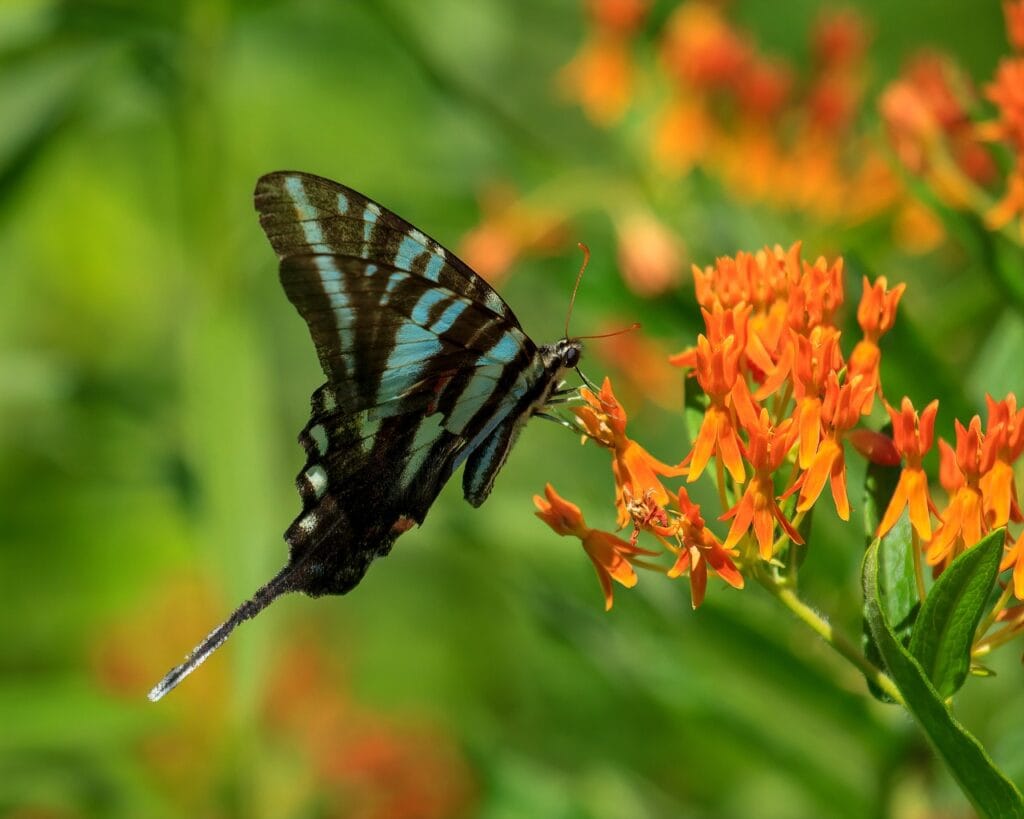
The Zebra Swallowtail is appropriately named with its white and black stripes on its wings that resemble its namesake. It’s easy to identify with its coloration and long tails. You’re most likely to find it in moist woods instead of open grasslands. Like the Monarch, it likes milkweed plants and will stick to areas where it and other favorite nectar species live.
6. Giant Swallowtail (Heraclides cresphontes)
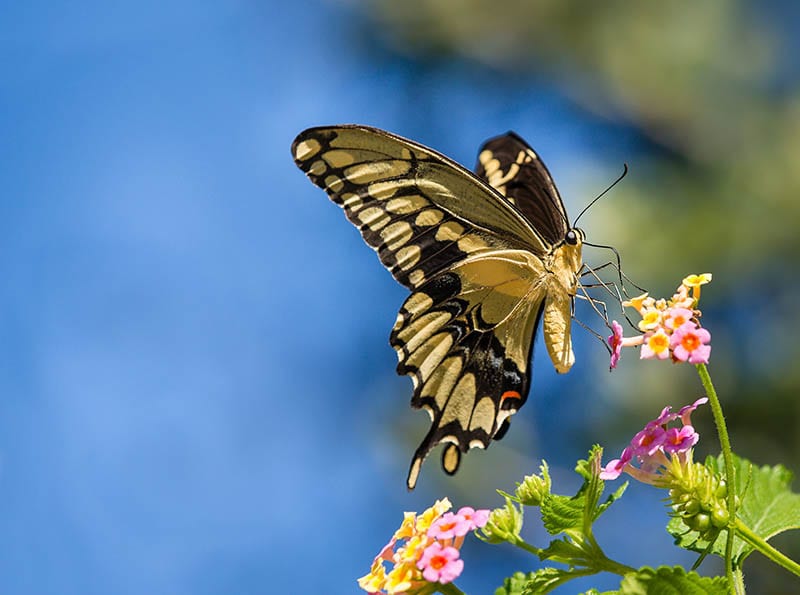
The Giant Swallowtail also has a fitting name as the largest species of this group on the continent, with a wingspan of nearly 7 inches wide. Its blue, yellow, and black coloration looks like a Tiffany lamp. It’s a generalist species with a large range that goes west to the Rockies and south to Florida, where it is considered a pest due to its predation of citrus trees.
7. Common Buckeye (Junonia coenia)

The Common Buckeye is unmistakable with its large spots on its wings resembling eyes looking at you. It’s easy to find in open grasslands but hard to get close to since it’s so leery of predators. It’s a common sight in southern Minnesota. If you’re quiet and stealthy enough, you may even be able to snap a photo of this beautiful butterfly.
8. Viceroy (Limenitis archippus)

The Viceroy’s claim to fame is its likeness to Monarch Butterflies which gives it an effective way to evade predators. The only difference between the two is the black line on the bottom of the Viceroy’s wings, which the Monarch lacks. It is found throughout Minnesota and stays put here year-round, unlike its seemingly identical twin.
9. White Admiral (Limenitis arthemis arthemis)
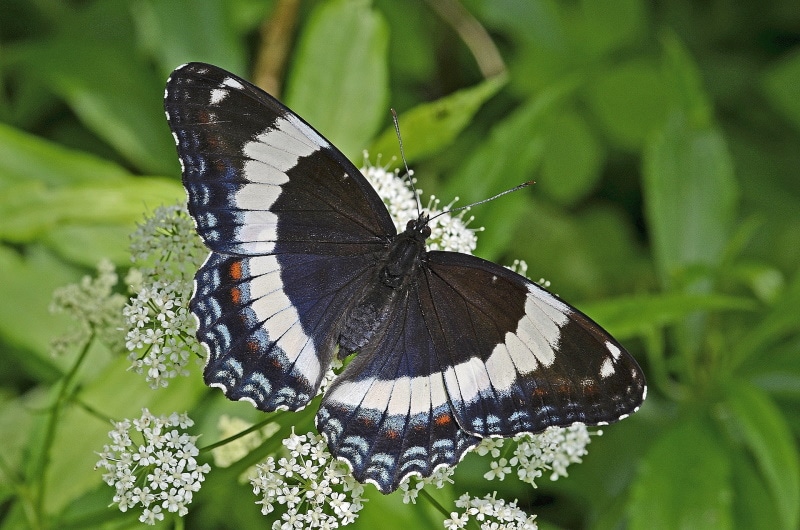
The White Admiral is a beautiful butterfly with primarily black wings ringed in white and blue. It lives in the northern half of Minnesota, with its range extending into Canada. A hybrid zone exists south of this area where it interbreeds with the Red Spotted Purple. The White Admiral differs from other species of its kind by eating fruit and carrion instead of nectar.
10. Red Spotted Purple Butterfly (Limenitis arthemis astyanax)
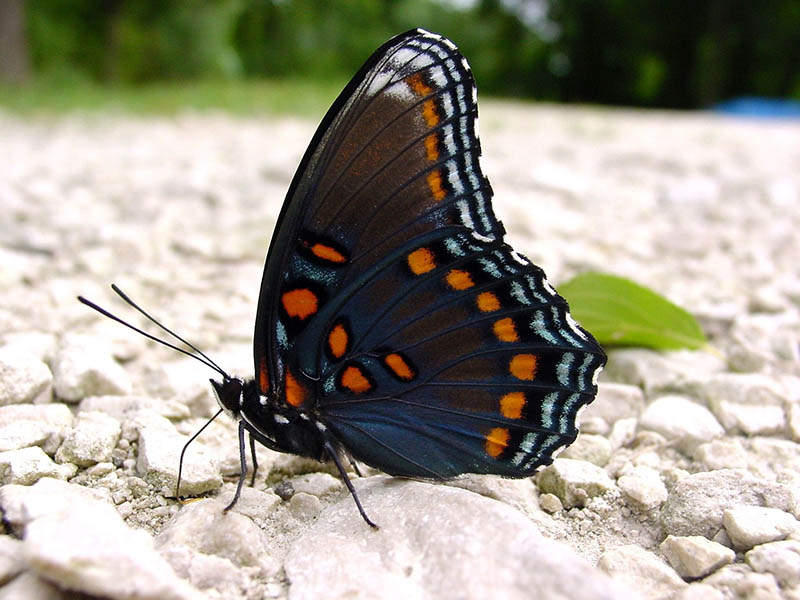
The Red Spotted Purple Butterfly took a page out of the Viceroy’s playbook with color mimicry of a poisonous species, the Pipevine Swallowtail. It prefers wooded areas where it will readily feed on tree sap. It lives in the eastern half of the country, including the entire state of Minnesota. It is mainly black with iridescent blue on the back of its wings.
11. Mourning Cloak (Nymphalis antiopa)
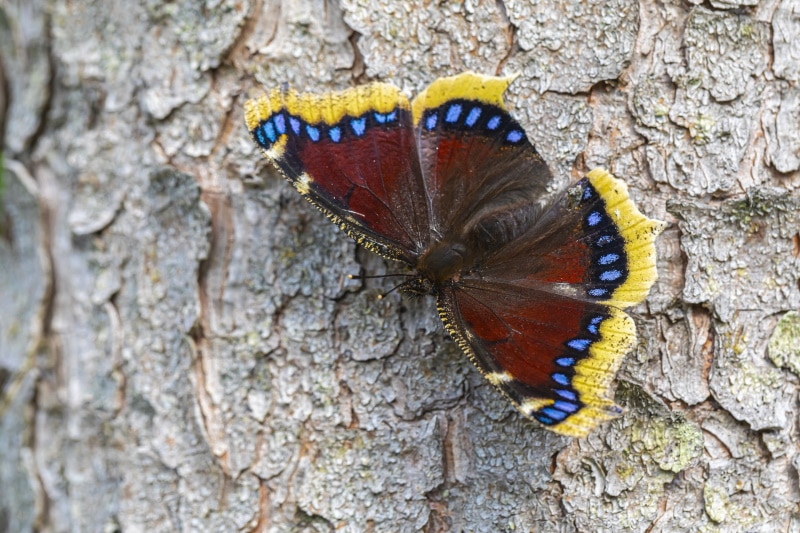
The name of the Mourning Cloak belies its beautiful pattern of brown, yellow, and blue coloration. It lives in moist woods where willows and related species are found. This species occurs across the entire United States into Canada, except for the far reaches of Florida and Texas. It’s a hardy butterfly that survives the Minnesota winters and is one of the first to emerge in the spring.
12. Eastern Tiger Swallowtail (Papilo glaucus)
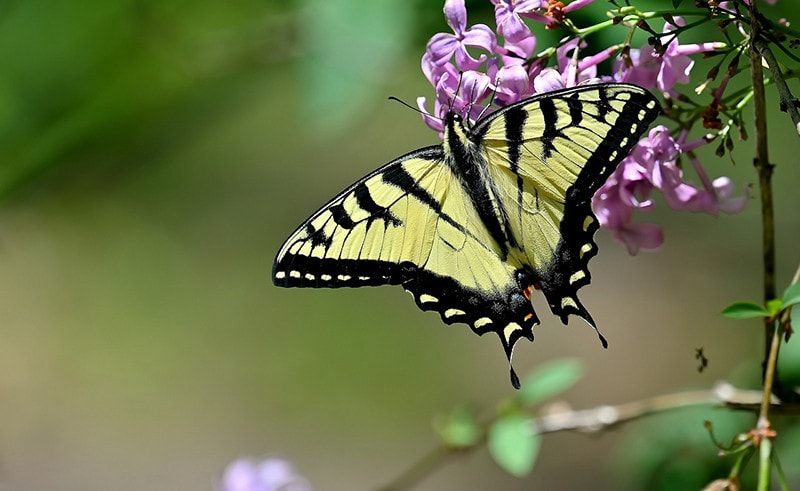
Besides the Monarch, the Eastern Tiger Swallowtail is probably one of the easiest butterflies to identify. Males have the familiar striking yellow and black coloration with long tails. Females have a dark and light form that isn’t as showy. It’s easy to attract these butterflies to your garden by planting tall flowers from which they can feed.
13. Pearl Crescent (Phyciodes tharos)
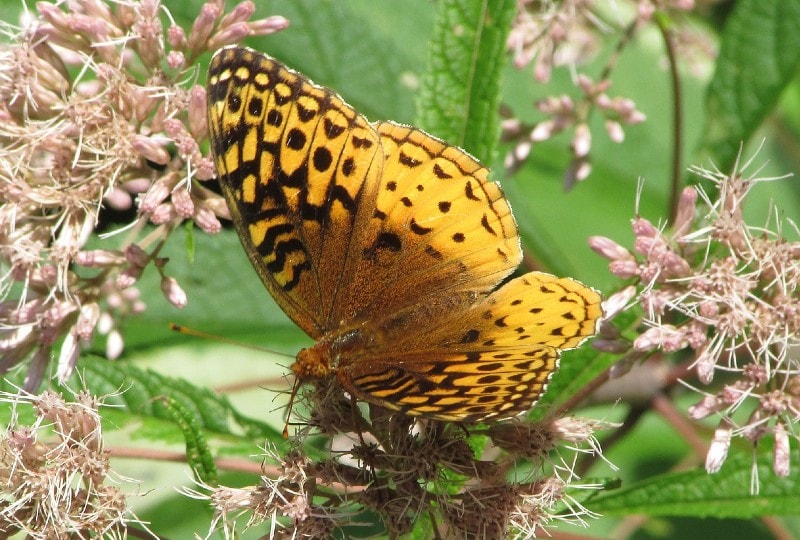
The Pearl Crescent looks like a moth with its gray and yellow pattern. It occupies almost the entire state except for the northwestern triangle. You’ll find it in a variety of habitats, from meadows to forest edges to your backyard! As long as it’s sunny with low, wet areas, this butterfly is satisfied with the spot. It lives across the country, barring the Pacific Northwest region.
14. Green Comma (Polygonia faunus)
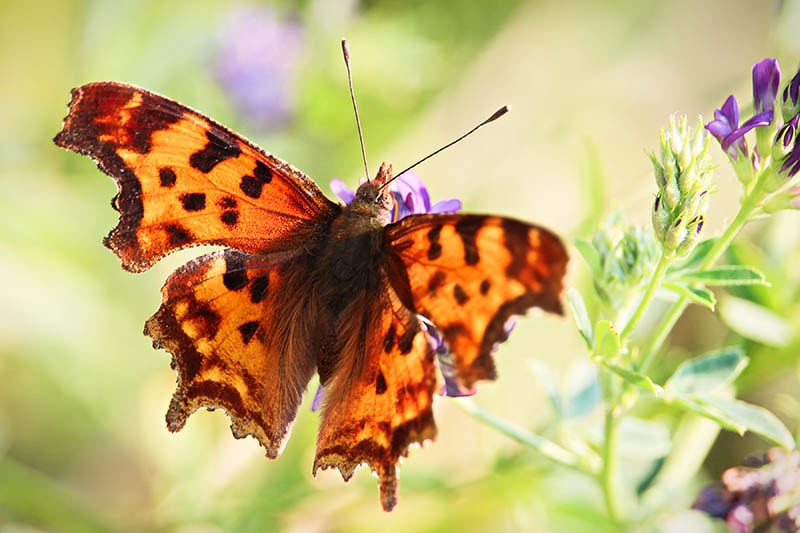
The Green Comma gets its curious name from markings on its underside that look like this punctuation mark. It isn’t as widespread in Minnesota as other species on our list. You’re more likely to encounter it in the northern part of the state in boreal forests. It also occupies riparian woodlands and wet meadows where it feeds on tree sap and nectar.
15. Question Mark (Polygonia interrogationis)
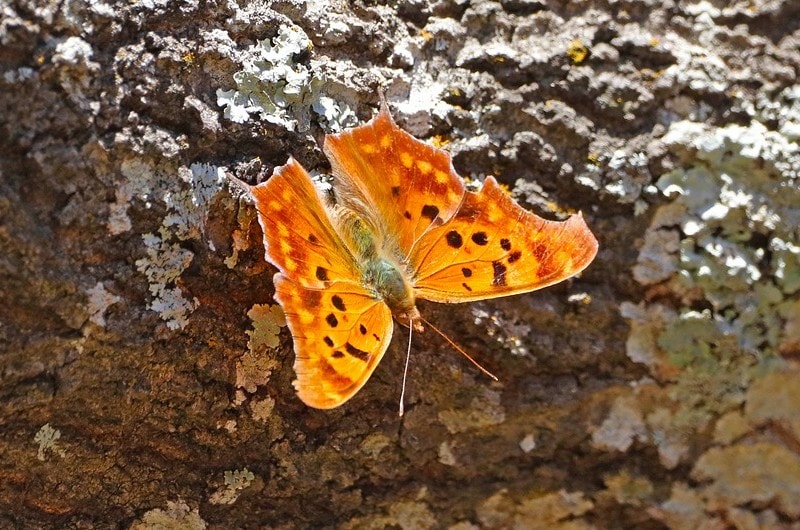
The Question Mark is an attractive butterfly with tan and burnt orange coloration. You’ll find it where nettle and elm trees grow in moist woodlands and meadows. Like our previous entry, you must use your imagination to determine why it got its name. It’s not something you’d spot when it’s in flight. It lives in the eastern half of the country and the entire state of Minnesota.
16. Common Checkered-Skipper (Pyrgus communis)

The Common Checkered-Skipper is a brown and white butterfly you’re most likely to see in open fields, meadows, and prairies. You’ll also see it in gardens and other human-occupied areas. It lives throughout the United States and into Mexico. It feeds on native vegetation, such as asters and fleabane. It can’t survive the Minnesota winters and travels south to get away from the cold.
17. Regal Fritillary (Speyeria idalia)
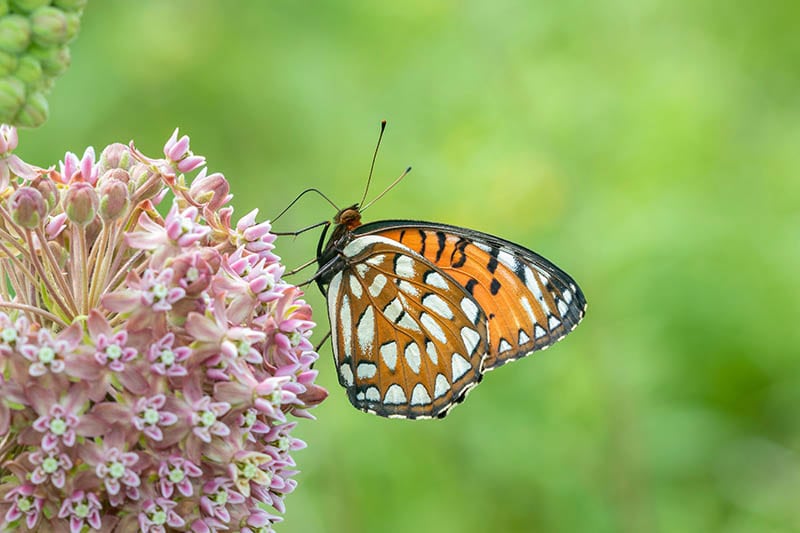
The Regal Fritillary’s black and orange coloration looks sort of like a Monarch though less showy. The state’s population has decreased in recent years, prompting the DNR to list it as a species of special concern. Its range includes the western half of Minnesota into the southeastern corner. Its preferred habitat is native prairie. Sadly, less than 2% still exists in the Land of 10,000 Lakes.
18. Painted Lady (Vanessa cardui)
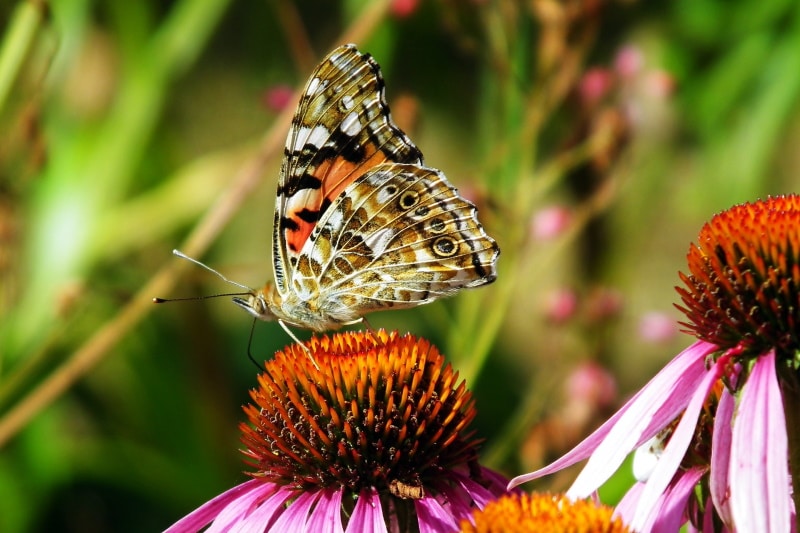
The Painted Lady is another orange and brown butterfly with excellent camouflage. You’ll find it in open meadows and grasslands, feeding on its favorite food, nectar from asters. While it’s uncommon, scattered reports of sightings exist throughout the state. It is a migratory species that heads south to Mexico before the Minnesota winters hit.
19. Red Admiral (Vanessa atalanta)
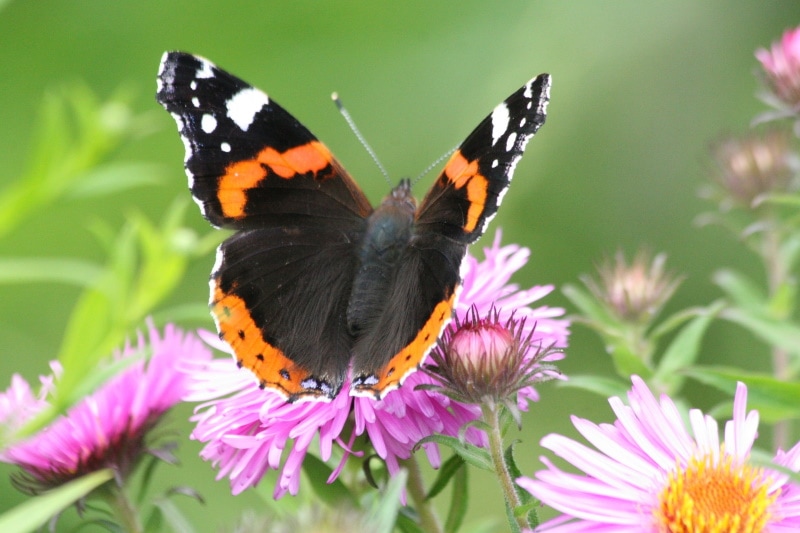
The name of the Red Admiral is something of a misnomer since it isn’t red but orange. Its dark brown wings have an orange band around them, shaped like a circle. You’ll often see them along the edges of moist woodlands where they can find rotting fruit to eat. This migratory butterfly lives across the entire United States and Canada.
20. American Lady (Vanessa virginiensis)
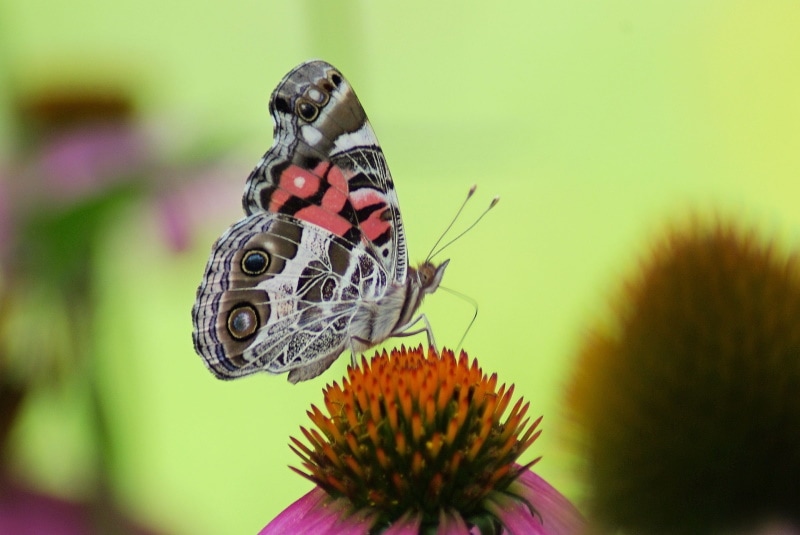
The American Lady is a colorful butterfly with white, purple, and even pink markings on its wings. The pattern on the underside resembles cobwebs, making it especially striking. It lives throughout Minnesota but migrates south for the winter. It feeds on nectar and will visit your garden if you plant some milkweed in it.
Tips for Identifying Butterflies
Identifying butterflies in the field requires a good set of binoculars or a spotting scope. Many insects have defining markings that you may not be able to see without magnification. Many species have distinct habitat preferences. Your location provides clues about what you may or may not see in a particular spot. It’s typically tied to certain food sources.
A species’ body shape can help you whittle the identification down to a short list. Think of the distinct wing shape of swallowtails. You also must make sure you’re looking at a butterfly and not a moth. After all, the latter far outnumber the former with up to 2,500 species. Don’t forget to look on the ground and plants for caterpillars to help you identify the butterflies.
Conclusion
Identifying butterflies is a rewarding way to enjoy the outdoors. Being outside is a pleasure on its own. However, this investigation takes it to the next level by honing your skills in other fields, such as botany and ecology. You have to know where to find different species based on the habitats in which they will likely occur. It’ll help you appreciate the integral relationships that exist in nature much more.
Featured Image Credit: Erin Minuskin, Unsplash
Contents


